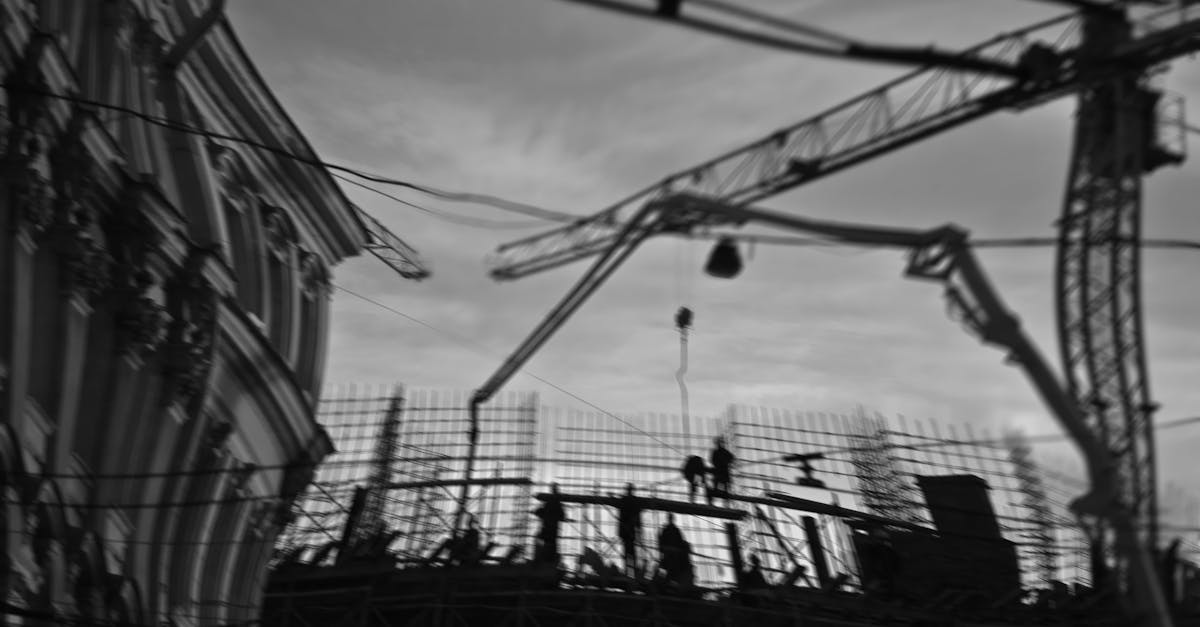 Automation and Stress Reduction
Automation and Stress ReductionEnhancing Structural Integrity in Passive House DesignsHow can smart technology be utilized to enhance mental well-being in Passive House design?
How does automation in Passive House design help reduce stress levels?Table Of ContentsThe use of biophilic design, which integrates elements of nature into indoor spaces, has
Utilising Passive Solar Design PrinciplesHow does colour psychology play a role in interior design for emotional well-being?
Passive solar design principles play a crucial role in enhancing the structural integrity of passive house designs. By effectively harnessing the sun's energy, these principles contribute to reducing the overall energy consumption of the building while ensuring a comfortable indoor environment. Positioning windows strategically is one key aspect of passive solar design, allowing for optimal natural light entry and heat retention within the interior spaces. This not only reduces the reliance on artificial lighting and heating systems but also promotes a sustainable and eco-friendly living environment.Colour psychology in interior design is the study of how different colours can impact emotions and mood. By selecting calming colours like blues and greens for living spaces, interior designers can promote relaxation and reduce stress levels, ultimately enhancing emotional well-being.
Another important aspect of proper ventilation in passive house designs is the prevention of moisture build-up, which can lead to mold growth and structural damage. Strategic placement of ventilation openings, along with the use of moisture-resistant materials, can help mitigate this risk. Additionally, incorporating sensors to monitor humidity levels and adjust ventilation accordingly can further enhance the effectiveness of the ventilation system in maintaining a dry and healthy indoor environment.
Ensuring adequate ventilation without compromising energy efficiencyRelated Links
Proper ventilation is crucial in passive house designs to maintain air quality and prevent moisture buildup, without compromising energy efficiency. This balance can be achieved by strategically placing windows and incorporating efficient ventilation systems within the overall design. Natural ventilation, such as cross-ventilation and stack effect, can be maximised to ensure a constant flow of fresh air while minimising the reliance on mechanical systems.Thermal Comfort in Passive Houses: Strategies and Benefits
To further enhance ventilation without increasing energy consumption, passive cooling techniques like shading devices and thermal mass can be utilised. These strategies help regulate indoor temperatures by reducing heat gain in warmer months and promoting heat retention in colder months. By incorporating these passive design principles, passive houses can achieve optimal ventilation without compromising their energy-efficient status.The Importance of Indoor Air Quality in Passive Houses
Considering Structural Design for Maximum SupportPassive House Design and its Positive Impact on Occupant Health
einforced foundations, load-bearing walls, and appropriate material selections, the overall integrity of the building is fortified.Thermal Comfort: The Key to Well-being in Passive Houses
Consulting with structural engineers early in the design process is crucial to identify potential weak points and implement suitable solutions. Factors like seismic activity, wind loads, and soil conditions need to be carefully evaluated to determine the most effective structural design. Additionally, innovative methods such as using advanced materials and construction techniques can further enhance the structural support of passive houses, ensuring they stand the test of time with resilience and durability.
Consulting with engineers to enhance loadbearing capacities
Structural integrity is a crucial aspect of any building design, especially in the context of passive houses. Consulting with engineers can provide valuable insights into enhancing load-bearing capacities to ensure the longevity and stability of the structure. Engineers can assess the existing design and propose modifications or additions that can significantly improve the overall support system of the building.
Through collaborative efforts with engineers, passive house designers can leverage their expertise to strategically reinforce load-bearing elements within the structure. By incorporating innovative solutions and construction techniques, engineers can help maximise the structural integrity of passive houses while maintaining energy efficiency standards. Their input is essential in optimising the design to withstand various environmental factors and ensure a robust foundation for long-term durability.
FAQS
What are passive house designs?
Passive house designs focus on utilizing natural resources like sunlight and ventilation to maintain comfortable indoor temperatures without relying heavily on mechanical systems for heating or cooling.
How can passive solar design principles enhance structural integrity in a house?
Passive solar design principles involve strategically positioning windows and insulation to maximize sunlight exposure and heat retention, reducing the need for artificial heating and thus contributing to the overall structural integrity of a house.
Why is proper ventilation important in passive house designs?
Proper ventilation is essential in passive house designs to ensure a healthy indoor environment and prevent issues like mold growth. It also helps regulate indoor temperatures and humidity levels without compromising energy efficiency.
How can engineers help enhance the load-bearing capacities of passive house designs?
Engineers can provide valuable input on structural design considerations to ensure that passive house designs have adequate load-bearing capacities. Consulting with engineers can help optimize the structural integrity of a passive house while maintaining energy efficiency.
What role does strategic window positioning play in enhancing natural light and warmth in passive house designs?
Strategic window positioning in passive house designs can maximize natural light exposure and warmth, reducing the need for artificial lighting and heating. This not only enhances the comfort of occupants but also contributes to energy savings and overall structural integrity.